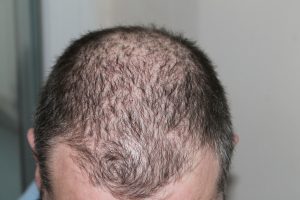Being cautious and thorough before agreeing to the procedure and signing any paperwork is essential.
In recent years, hair transplant procedures have become increasingly popular to address hair loss and improve self-confidence. However, patients must know the legal considerations before undergoing this treatment.
From understanding the terms and conditions of treatment contracts to identifying potential sources of liability, patients should be aware of various legal issues before committing to a hair transplant procedure.
Before venturing into transplant treatment, however, patients should know the legal ramifications of the procedure. By understanding these issues, patients can make informed decisions about their treatment and protect their legal rights.
What is a hair transplant procedure?
Hair transplant procedures use the existing hairs of patients to create the visual of thicker hair all over the head. There are two types of hair transplant procedures: Follicular unit transplantation (FUT or Strip) and follicular unit extraction (FUE). A surgeon will establish which method is best for the patient.
The FUT or strip method
The process for a FUT hair transplant is as follows.
- Surgeons remove a strip of skin with hair from the back of the patient’s head.
- They divide it into pieces, each containing 1 to 4 hairs.
- They place these hair grafts into tiny cuts in the scalp.
- Stitches close the gaps around the grafts and hold the hairs in place.
This method leaves a scar on the back of the patient’s head, but it is only visible if they have concise hair. The patient’s hair needs to be trimmed where surgeons remove the skin. The benefit of this method is the patient doesn’t need to shave their whole head.
The FUE method
The process for an FUE hair transplant is as follows.
- Surgeons shave the back of the patient’s head.
- They remove the patient’s hair follicles one at a time to make grafts.
- They place each graft into its cut across the scalp.
The patient has more scars in this method but is much smaller. FUE transplants require more time in the operating theater but are more precise overall.
Celebrity hair transplants have boosted the popularity of this cosmetic surgery. Over 149,000 people got hair transplants in the U.S. and Canada last year alone. The FUE method was the most common, comprising 66.2% of procedures. That may be because more men get hair transplants. Roughly 87% of hair transplant patients in 2022 were men, who are typically more open to having their heads shaved for the procedure.
What do patients need to know before getting a hair transplant?
Losing your hair can have a massive impact on your confidence and self-image. Hair loss affects men and women, with women’s hair loss being much less common. A range of things can cause hair loss, and the treatments for it can be equally varied.
Products that promise increased hair growth or thickening of existing hair are among the most common. Sometimes, however, people prefer to opt for hair transplant procedures. Patients must ask various legal questions before proceeding with hair transplant treatments. With cosmetic surgery, there is always a certain level of risk the patient needs to assess.
Getting the right surgeon
In the U.S., the American Board of Cosmetic Surgery (ABCS) is a medical board that ensures cosmetic surgeons have proper training and experience in their field. No federal laws in America require a surgeon to have specific training in the services they offer. This means that general surgeons are free to open cosmetic practices without experience.

Therefore, finding an adequately certified surgeon to perform a hair transplant is essential. Patients should find well-established surgeons with successful hair transplants to avoid malpractice lawsuits.
Understanding medical malpractice in cosmetic surgery
Medical malpractice is a complex thing to prove, especially in cosmetic surgery. Here are some signs that medical malpractice has occurred.
- Surgical errors: This is the clearest sign. If any part of the pre-op or the procedure itself needs to be corrected, this is grounds for a lawsuit.
- Missing informed consent: Provide the patient with the information to consent properly and happily to avoid any surgeon who pushes for the procedure.
- Lack of training/experience: Patients should look elsewhere if the surgeon’s credentials don’t align with their services or purported training.
However, experiencing many common but uncomfortable side effects of a hair transplant is not grounds for medical malpractice. A surgeon is only liable for breaching their duty of care to the patient. It should be noted that determining liability for a hair transplant procedure can be a complicated process, as it may involve not only the surgeon but also any contractors involved in the procedure. In some cases, contractors could also be sued in a small claims court for their role in the procedure.
Prepare relevant paperwork
It’s essential to prepare the relevant paperwork before any procedure. Cosmetic surgery requires the patient to sign a waiver. Patients should read this waiver and understand when their surgeon is and isn’t liable. This also informs patients of any common side effects of their hair transplant.
Hair transplant surgery can massively improve a patient’s life. However, being cautious and thorough before agreeing to the procedure and signing any paperwork is essential. While it’s a low-risk surgery, someone can still perform it incorrectly. With the popularity of hair transplants only increasing, it’s never been so crucial to research as much as possible.


Join the conversation!